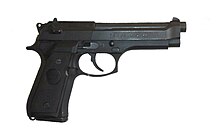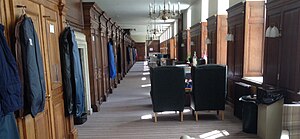Yeah it’s a bit long winded just like me! But there might be some folks out there. Who do not know this and want to learn.
Enjoy
Grumpy
Month: September 2017
Here is something else that is not made of wood & Steel for the Gentleman Readers out there. I hope that you like it.

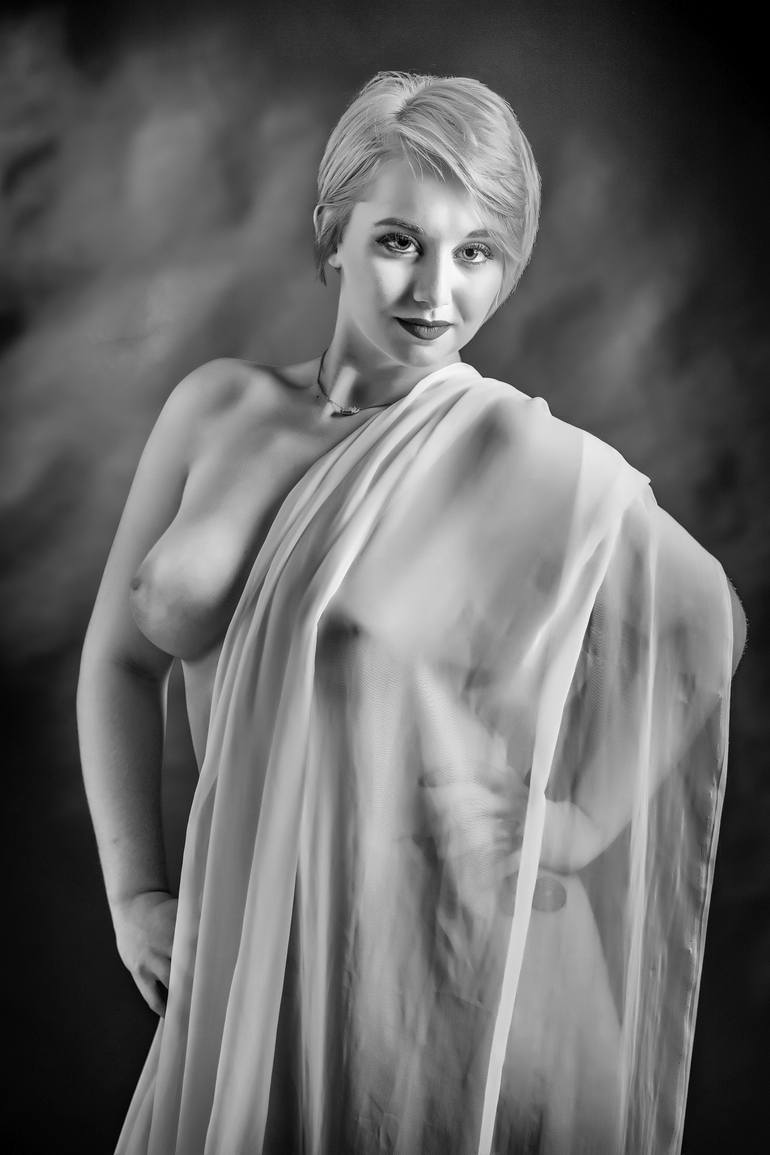


Some more Gun Porn

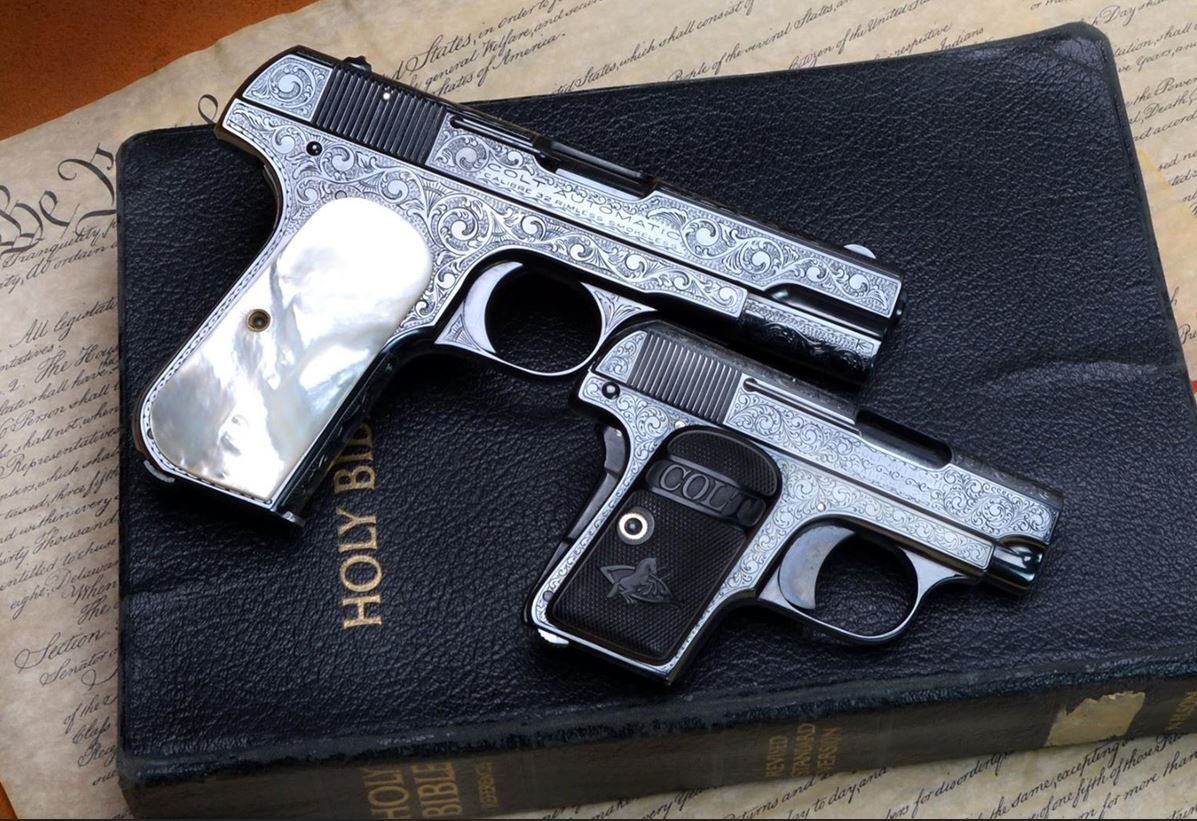
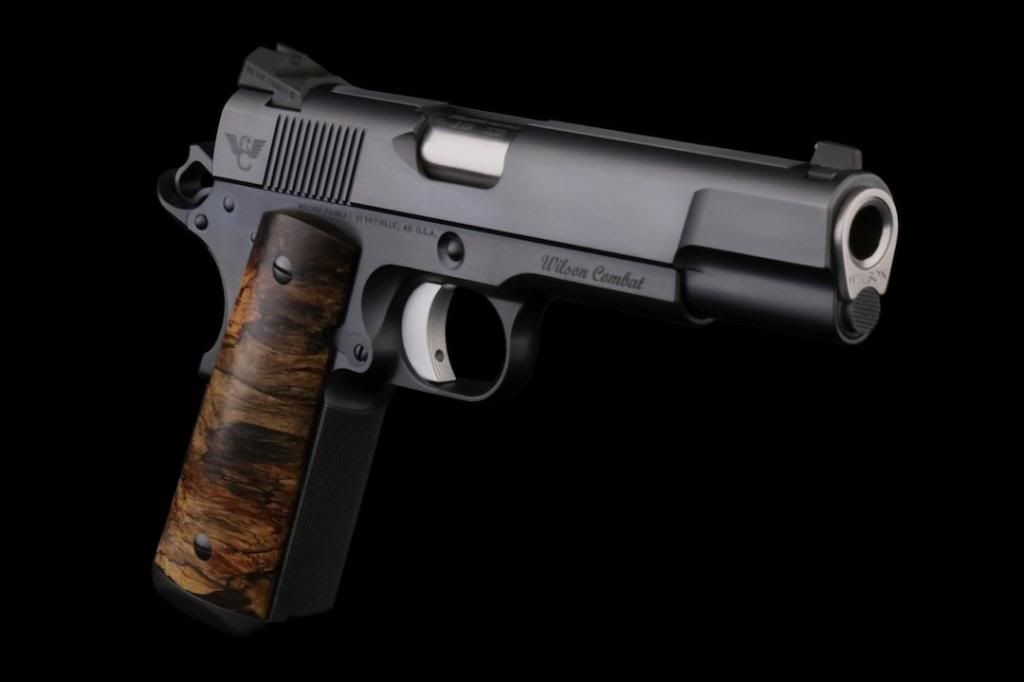

Westley Richards .375 Bolt Action rifle built on original Oberndorf Magnum Mauser
____________________________________
Because I found some more Guns & Stuff That I want to add to the collection! ****By the way I do take tips from those so inclined to do so. My Paypal button is around here for those kind souls!****
Thanks
Grumpy
Here is some more!

GRANITE Mountain Arms 505 Gibbs-Ike Ellis.




F.N. Mauser – Custom – .270 Win caliber


Griffin & Howe – Mauser 98 Custom – .30-’06 caliber

Ruger Number 1 Highly Engraved

Custom pair of Westley Richards sidelock double rifles chambered in .470 Nitro Express. (God that must hit a shooter hard! Because look at its so called recoil pads)
The 92F Beretta 9mm

This is when you do not want to see a 92F!


Now I was basically phasing out of the Army National Guard. When “THE WORD” came down about the 1911a1 being replaced by the 92F.

To say that some of the Real Old Sweats were not happy. Would not really do them justice in describing their righteous rage.


But then after the survivors who said “maybe this might be a good thing”. Were either scrapped off the floor or gotten a Dust Off to the Medicos.
So We did like what all good soldiers do.
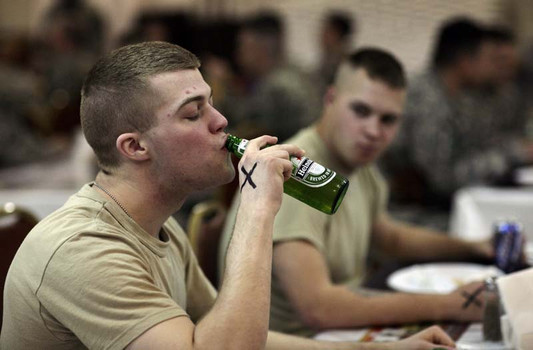
and then we.

Followed by almost stopping to complain about it for a while & continue the Mission.
Now here is what I found out. It is not that bad a pistol really. As I own one, (The price was too good to pass by the deal)
That & it seems to have the capacity to hold a huge amount of 9mm ammo. (15 rounds outside of the People’s Republic of California!)
Just do not tell that Jerk Mel Gibson about that. As it seems that he never has to reload in the movies.
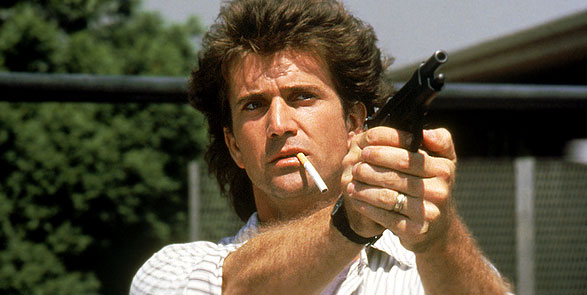
It also has some heft and shoot better at least to than the 45. I also like the sight picture. Here are some of the variations out there.

Now for the not so good news. The Trigger sucks in my humble opinion. Either in the single or double action mode. But maybe that is my problem.
Would I take this gun into a firefight by itself? Oh Hell no! Since I firmly believe that a pistol is really just a badge of rank. That & a gun of last resort.
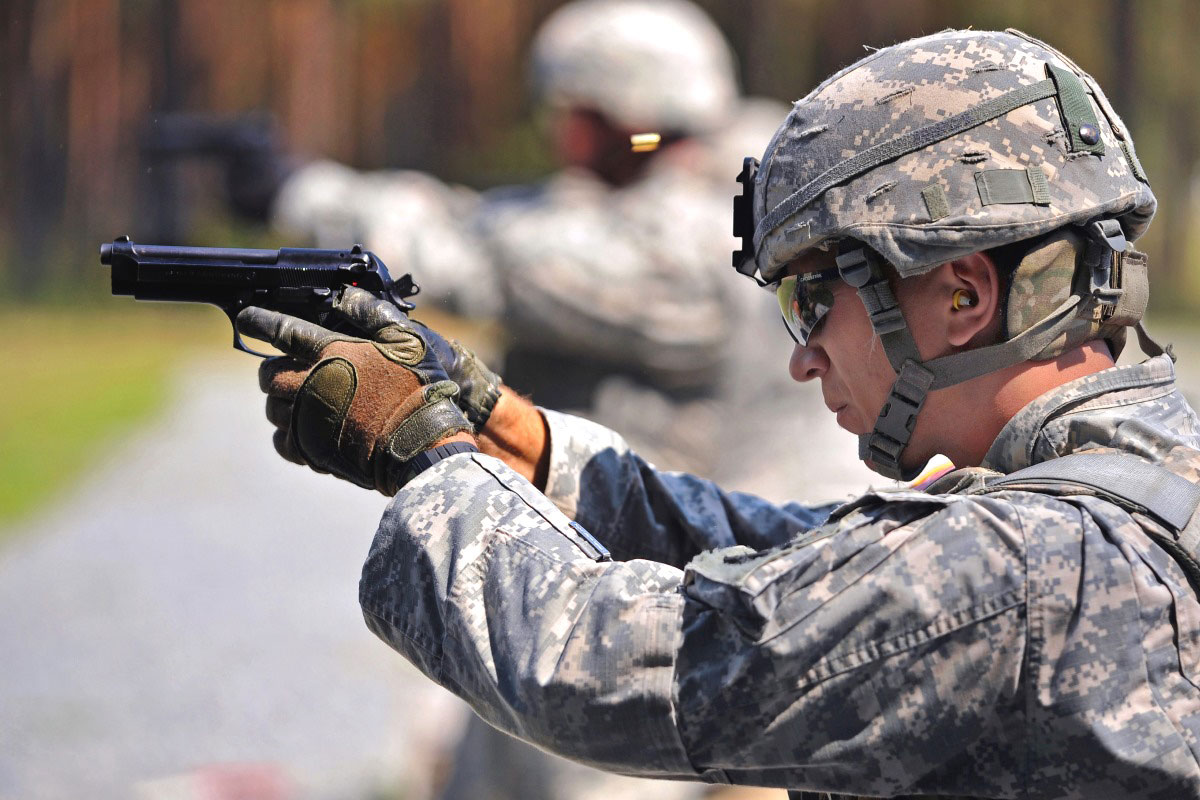
If I could not avoid such a fight or not call in a strike.

Then I would take an AK-47 to the party.

But hopefully that will not happen again in mine or my family’s lifetime
Here is some more technical information about this fine pistol!
Beretta 92
| Beretta 92 | |
|---|---|
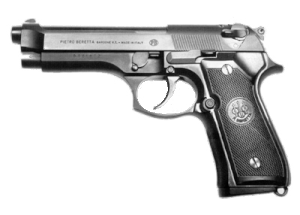
Beretta 92FS
|
|
| Type | Semi-automatic pistol |
| Place of origin | Italy |
| Service history | |
| In service | 1975—present |
| Used by | See Users |
| Production history | |
| Manufacturer | Fabbrica d’Armi Pietro Beretta |
| Produced | 1976—present |
| Variants | See Variants |
| Specifications | |
| Weight |
|
| Length |
|
| Barrel length |
|
|
|
|
| Cartridge |
|
| Muzzle velocity | 381 m/s (1,250 ft/s) |
| Effective firing range | 50 m (160 ft) |
| Feed system | Detachable box magazine:
|
The Beretta 92 (also Beretta 96 and Beretta 98) is a series of semi-automatic pistols designed and manufactured by Beretta of Italy. The model 92 was designed in 1972 and production of many variants in different calibers continues today.
The United States Armed Forces replaced the M1911A1 .45 ACPpistol in 1985 with the M9, a military spec Beretta 92FS.
Contents
[hide]
History[edit]
The Beretta 92 pistol evolved from earlier Beretta designs, most notably the M1923 and M1951. From the M1923 comes the open slide design, while the alloy frame and locking block barrel, originally from Walther P38, were first used in the M1951. The grip angle and the front sight integrated with the slide were also common to earlier Beretta pistols. What were perhaps the Model 92’s two most important advanced design features had first appeared on its immediate predecessor, the 1974 .380 caliber Model 84. These improvements both involved the magazine, which featured direct feed; that is, there was no feed ramp between the magazine and the chamber (a Beretta innovation in pistols). In addition, the magazine was a “double-stacked” design, a feature originally introduced in 1935 on the Browning Hi-Power.[1]
Carlo Beretta, Giuseppe Mazzetti and Vittorio Valle, all experienced firearms designers, contributed to the final design in 1975.[2]
Evolution[edit]
92[edit]
Production began in May 1976, and ended in February 1983. Approximately 7,000 units were of the first “step slide” design and 45,000 were of the second “straight slide” type.[3]
92S[edit]
In order to meet requirements of some law enforcement agencies, Beretta modified the Beretta 92 by adding a slide-mounted combined safety and decocking lever, replacing the frame mounted manual thumb safety. This resulted in the 92S which was adopted by several Italian law enforcement and military units.
92SB (92S-1)[edit]
The 92SB, initially called 92S-1, was specifically designed for the USAF trials (which it won), the model name officially adopted was the 92SB. Features added include a firing pin block (thus the addition of the “B” to the name), ambidextrous safety levers, 3-dot sights, and relocated the magazine release catch from the bottom of the grip to the lower bottom of the trigger guard. The later relocation of the magazine release button means preceding models (92 & 92S) cannot necessarily use later magazines, unless they have notches in both areas.[4]
A compact version with a shortened barrel and slide and 13-round magazine capacity known as the 92SB Compact was manufactured from 1981 to 1991.[4]
92F (92SB-F)[edit]
Beretta modified the model 92SB slightly to create the 92SB-F (the “F” added to denote entry of the model in U.S. Government federal testing) by making the following changes:
- Design of all the parts to make them 100% interchangeable to simplify maintenance for large government organizations.
- Squared off the front of the trigger guard so that one could use finger support for easier aiming.
- Recurved the forward base of the grip to aid aiming.
- Hard chromed the bore to protect it from corrosion and to reduce wear.
- New surface coating on the slide called Bruniton, which allegedly provides better corrosion resistance than the previous plain blued finish.[5]:16
The French military adopted a modified version of the 92F with a decocking-only lever as the PAMAS G1. These pistols have Tellurium in the slide, making the steel brittle and as such only have a service life of approximately 6,000 rounds. [1]
92FS[edit]
The FS has an enlarged hammer pin that fits into a groove on the underside of the slide. The main purpose is to stop the slide from flying off the frame to the rear if it cracks. This was in response to reported defective slides during U.S. Military testing.[6]
Design[edit]
The Beretta 92’s open slide design ensures smooth feeding and ejection of ammunition and allows easy clearing of obstructions. The hard-chromed barrel bore reduces barrel wear and protects it from corrosion. The falling locking block design provides good accuracy and operability with suppressors due to the in-line travel of the barrel. This is in contrast to the complex travel of Browning designed barrels. The magazine release button is reversible with simple field tools. Reversing the magazine release makes left-handed operation much easier.
Increasingly, it has become popular to reduce handgun weight and cost as well as increase corrosion resistance by using polymers. Starting around the year 2000, Beretta began replacing some parts with polymer and polymer coated metal. Polymer parts include the recoil spring guide rod which is now also fluted, magazine floor plate, magazine follower and the mainspring cap/lanyard loop. Polymer coated metal parts include the left side safety lever, trigger, and magazine release button.[7]
Magazines[edit]
To keep in line with the introduction of laws in some locations restricting magazines that hold more than 10 rounds, Beretta now manufactures magazines that hold fewer than the factory standard 15 rounds. These magazines have heavier crimping (deeper indentations in the side) to reduce the available space while still keeping the same external dimensions and ensuring that these magazines can be used on existing firearms. Beretta also produces 15 round “Sand Resistant” magazines to resolve issues encountered with contractor made magazines, and 17 round magazines included with the A1 models. Both magazines function in earlier 92 series and M9 model pistols.
Italian magazine manufacturer Mec-Gar now produces magazines in blue and nickel finishes with an 18-round capacity, which fit flush in the magazine well on the 92 series. Mec-Gar also produces an extended 20-round blued magazine that protrudes below the frame by 3⁄4 inch (19 mm). These magazines provide users in unrestricted states with a larger capacity magazine.
Variants[edit]
The Beretta 92 is available in many configurations and models:
Trigger systems[edit]
- FS Models
- The FS models are Double-action/Single-action (DA/SA) pistols; they have an initial double-action trigger pull subsequently followed by single-action operation. The “FS” models have a safety lever that also functions as a decocking lever.
- G Models
- The G models (so named because this configuration was first designed for the French “Gendarmerie“) feature a decocking lever only instead of the safety-decocking lever of the FS. When the decocking lever is released, it automatically returns to the ready-to-fire position. There is no manual safety.
- DS Models
- The DS models are double action only pistols: the hammer doesn’t stay cocked. Therefore the hammer spur has been removed, and is flush with the rear of the slide. The safety levers serve as manual safeties only and have no decocking feature..
- D Models
- The D models are also double-action only pistols but without the manual safeties.
Models[edit]
- 90Two
- (2006-2012)
- The 90two is a 9mm/.40 variant of the 92-series with a redesigned, thicker slide and frame with an accessory rail, captive recoil spring, internal recoil buffer, replaceable sights, user changeable monogrips and 17-round magazines.[8]
- 92A1 / 96A1
- (2010–present)
- The 92A1 and 96A1[9] were introduced in 2010, based on elements from the 92FS and 90two. The overall shape and styling builds on the 92FS with more parts commonality than the 90-two had. From the 90-two comes a heavier slide construction combined with a slightly altered frame to accommodate the picatinny rail and .40 S&W power levels. While most internal components are compatible with standard 92 models, the slide, frame, captive recoil spring assembly, and takedown lever and button of the 92A1 and 96A1 are not interchangeable with other models other than the 90-two.
- 92G-SD / 96G-SD
- (2002-2005, 2015-)
- The 92G-SD is a tactical variant of the 92G with a Brigadier slide and picatinny rail.
- 96FS
- (1990-2008)
- Variant chambered for the .40 S&W, Succeeded by the 96A1.
- 98F
- Variant chambered for 9×21mm IMI. This option was introduced in 1987 for markets where it is illegal to own a weapon chambered for a military cartridge such as 9×19mm; essentially, this is the case of Italy. There were also about 5000 early 98F manufactured in 7.65×21mm Parabellum.
- Billennium
- (2001)
- A limited-edition (2000 copies) commemorative (of the year 2000) model manufactured in 2001, featuring the heavier Brigadier slide. Only 1000 Billennium pistols were initially imported into the United States, the other 1000 were sold throughout the rest of the world. The Billennium also has a frame mounted safety.
- Brigadier
- (1993–present)
- 60-gram (2.1 oz) heavier slide and 1 millimetre (0.039 in) wider to improve control when firing multiple shots in quick succession. It also includes removable front and rear sights.
- CB
- (1992–1993)
- Single action only. It is designed for sport shooting and includes a front barrel bushing for improved accuracy.
- Centennial
- (2015)
- The 92 FS Centennial limited edition (500 units) commemorates adoption by the Italian Military of Beretta’s earliest semiautomatic pistol, the Model 1915. This Centennial 92 is notable for its frame-mounted manual safety and single-action-only mechanism. The Beretta medallion in each wood grip panel displays the anniversary dates in Roman numerals, which are also engraved on either side of the steel slide. The pistol is packaged in a custom M2A1 ammunition can bearing the Centennial logo.[10][11]
- Centurion
- (1992–2004)
- Shorter barrel and slide (like “Compact”), but with standard-sized frame that has a slightly shorter dust cover. Special G Centurion, DS Centurion and D Centurion models are available in some countries.
- Combat
- (1994–2001)
- Heavier Brigadier slide, single-action only and also designed for sport shooting, including a front barrel bushing for improved accuracy. It also came with an additional longer barrel that was weighted.
- Compact L
- (1992–present)
- Shorter barrel, slide, and more compact frame (13-round magazine capacity).
- Compact M
- (1992–2004)
- Similar to the Compact L, but has a slimmer grip that accepts only a single stacked 8-round magazine.
- Compact with Rail
- (present)
- A compact version of the M9A1.
- Elite I
- (1999–2001)
- Pistols with this option include the heavier Brigadier bruniton slide with front serrations and Elite designation, Inox finish (silver) stainless barrel, thin skeletonized hammer, and bevel of the magazine well. A flat hammer spring cap was standard as well as the decock only (G-Model) feature and dovetailed front sight. It was introduced in 1999 and replaced by the Elite II option in 2001.
- Elite IA
- (2001)
- This option is essentially a black Vertec with a bruniton Brigadier G slide having the Elite 1A designation and a thicker skeleton hammer. The 4.7 in (120 mm) stainless barrel with Inox finish was also changed to the blackened stainless version like black Vertecs.
- Elite II
- (2001)
- This option replaced the Elite I option in 2001 and includes the same features as the original Elite plus removable Novak type sights, extended magazine release catch, checkered front/rear grip strap, thicker (than Elite I) skeletonized hammer, and lighter D-spring. This option is available only with the stainless G-Model slide, also with front serrations. The stainless barrel for the Elite II has a target crown.
- Inox
- (present)
- The Inox models feature the following parts made in stainless steel: the barrel, the slide (including the extractor, the safety and the right-side manual safety lever), the trigger, the trigger pin, and slide stop lever. The aluminum frame is anodized to match the color. Can have either black or stainless controls.
- M9
- (1990-present)
- The M9 is essentially the commercial 92FS as the design was when it was adopted by the US military in the late 1980’s. Subtle differences from a modern production 92FS are a straight dustcover, “snowman” style sights, a straighter grip and military markings.
- M9A1
- (2006-present)
- The M9A1 was adopted by the USMC in 2006. It adds a 1-slot Picatinny rail, more aggressive front and backstrap checkering and a beveled magazine well for easier reloading of the weapon. M9A1 pistols are sold with physical vapor deposition (PVD) coated magazines developed to better withstand the conditions in the sandy environments in Iraqand Afghanistan.[12]
- M9A3
- (2015-present)
- The M9A3 (the M9A2 concept never went into production) was released in 2015 as part of the Modular Handgun System trials. The main updates to the M9A3 were a 3-slot Picatinny rail, thinner vertical grip, removable wrap-around grips that can be swapped between Vertec-style and ‘old’ M9 style[13], fully removable sights and a universal slide, which makes the gun convertible from decocker-safety to decocker-only mode. Additionally, the M9A3 comes with 17-round sand-resistant magazines in a beveled shape for easier reloading.
- Steel I
- (2004)
- Nickel-plated carbon steel, single-action-only, collector’s model. [Edit: Both single-action-only and single/double-action variants exist. Also used for competitive shooting because of its steel frame (for added weight and strength), the frame-mounted safety and/or Vertec-style grip-frame that are all desirable features in a competition gun.]
- Stock
- (1994–present)
- Heavier Brigadier slide. It is also designed for sport shooting and includes a front barrel bushing for improved accuracy.
- Vertec
- (present)
- Thin Vertec polymer grips, flush muzzle with slide, and dovetail target sights. Late models have an underbarrel 92A1-style Picatinny accessory rail.
- Wilson Combat 92G Brigadier Tactical
- (2014 to present)
- Made in collaboration with Wilson Combat,[14] these pistols differ from the standard Brigadier in that they have a military standard 1913 picatinny rail, all steel controls (as opposed to the polymer coated steel), decock only feature (G-model), 4.7″ target crowned barrel, fluted steel guiderod, thin profile G-10 grips, rounded trigger guard, the lighter hammer spring used in the “D” model, Elite II hammer, and their own unique serial number with a “WC” prefix among other features.
93R machine pistol[edit]
The Beretta 93R is a significantly redesigned 92 to provide the option of firing in three-round bursts. It also has a longer ported barrel, heavier slide, fitting for a shoulder stock, a folding forward grip, and an extended magazine. Unlike other Berettas in the 90 series it is single-action only, does not have a decocker, and very few are around today.[5]:12–13
Copies[edit]
The Beretta 92 was designed for sports and law enforcement use and, due to its reliability, was accepted by military users in South America and other countries all over the world.
- Brazil
- A large contract for the Beretta 92 was with the Brazilian army, for which Beretta set up a factory in Brazil. This factory was later sold to the Brazilian gunmaker Taurus (Forjas Taurus S/A). Taurus makes pistols called PT92without the need for a license from Beretta since their design is based on the original Beretta 92, whose patents have since expired.
- The PT92 can be distinguished from its modern Beretta counterpart primarily by having the safety mounted on the frame as opposed to on the slide like the Beretta. Though mechanically similar to the original, the PT92s differ from the early 92s by having a trigger guard similar to the modern 92s (the originals were rounded) and a magazine release in the same place as the modern 92s (the originals were at the bottom of the grip).
- Turkey
- Turkish companies MKEK and Girsan manufactured a copy of the Beretta 92F as Yavuz 16 for the Turkish Armed Forces and General Directorate of Security.[15][16] There has been speculation that these were being made under contract from Beretta. Some of these pistols were imported into the United States by the company American Tactical Imports as the American Tactical 92 or AT-92. Yavuz 16 was exported to Canada, Colombia, Georgia, Malaysia and Syria.[17]
- France
- France has made licensed copies of Beretta 92FS as the PAMAS G1 and the French-M92 is now in use in the Armies and law enforcement agencies, only to be replaced by the SIG SP2022 in the national police.
- Taiwan
- Taiwan had made Beretta-like pistols namely the T75 Pistol.
- South Africa
- South Africa had produced the Beretta under license since 1992 as the Vektor Z88, and the batches are used by the South African Police.
- Egypt
- Egypt had produced the Beretta 92 under license as the Helwan 920 with the magazine release button at the bottom of the magazine.[18]
Users[edit]
Some thoughts on Dirty Tricks
4 IMPROVISED WEAPONS TO LOOK OUT FOR DURING A FIGHT
In response to this violence, police are starting to get more involved—somewhat unevenly, of course, but involved nonetheless. Thus, weapons are no longer allowed to be carried willy-nilly into protests. However, our opponents may very well find ways to improvise weapons. Keeping that in mind, this article today will teach you four improvised weapons that you should watch out for.
For purposes of understanding their function and use, we can discuss how they are “made.”
1. The Millwall Brick
A favorite of English soccer “firms,” this is not the most effective weapon, but it is simple, cheap, and thus very common amongst those in the know.
It is very easily made: the transgressor first grabs a newspaper. If there is no newspaper, a skilled user will get as many sheets of heavy paper as possible—construction paper, a magazine, or even printer paper if all else fails. The papers are then placed on a flat surface. From here the paper can be “loaded” in two ways. One can moisten the paper (emphasis on moisten, not soak. It has to stay in one piece like paper mache), or place a small rock or a load of pennies in the center of the top paper. Once it’s prepared, they’ll begin rolling it up lengthwise and as tight as possible.

Once it’s in a tube, it’ll be folded in half. From there one can moisten it again, tie a lanyard around the end, use tape to “tighten” it, or “load” it in some other fashion.
While this is, again, not the most effective weapon (you can block it much easier than you could your average cudgel), it’s advantage is in its inconspicuousness. No policeman would arrest someone carrying a newspaper, right?

2. The Blackjack
The poor man’s flail or nunchaku, the blackjack is essentially a flexible club consisting of a heavy object inside some sort of pouch. Some would argue that this is properly called a slapjack, but that’s an issue for the linguists.
A “proper” blackjack is made of leather and has a rigid handle attached to the pouch, but any small-time thug can improvise one with any fabric object. A doorknob or paperweight inside a tube sock is often used, and again, not even our overly-litigious society can arrest somebody for wearing tube socks and carrying a paperweight.
Pantyhose, towels, a woman’s purse, these are all things to watch out for should you be going into a dangerous situation—and I’ll not make the obvious joke about your average Antifa member wearing pantyhose and carrying a purse.
For fun and edification, allow Steven Seagal to show how such a weapon can be used (skip to about 4:00).
3. Pens and the like
“Derp, this is pretty self explanatory” you might be saying to yourself—and for the most part it is. However, in writing this section I wish to convey two things. The first is how to tell if your opponent is skilled or not: the skilled opponent uses a fist grip.

Whereas the unskilled opponent will do some sort of hoopty “thumb on the spine grip”. If you see that kind of grip, you’ll have a much easier time disarming the guy.
The other thing is to point out that any long and sufficiently rigid object, even if it’s dull, can be thrusted effectively. A pen, a compass, even the aforementioned Millwall Brick can seriously hurt if you get hit with it.
And on that note…
4. The Umbrella
Believe it or not, the umbrella can in fact be used as an effective weapon. And bear in mind that I’m not referring to the “battle umbrellas” you can buy from arms companies and have been seen with some frequency amongst bodyguards and other security personnel. No, I’m referring to your average, full-sized folding umbrella.
Much like the pen as an improvised weapon, you can easily tell a skilled opponent from an unskilled opponent with regards to the umbrella: the unskilled opponent uses swings—a folding umbrella is far too fragile to take more than a couple of power swings, and thus you’ll be able to fight back pretty easily. The skilled opponent, in contrast, will use it like a bayonet: thrusting with both hands, aiming the point of the umbrella at you. That can take much more punishment, and deliver it too.
A truly skilled opponent might also buttstroke with the back hand, swinging the handle around for short range attacks, or possibly hooking and trapping techniques as well, but seeing as you’re likely not going to be fighting either Mr. Steed or Wong Fei-Hung, I’d be more wary of the bayonet-style stab.

In conclusion, should you unfortunately be forced into a dangerous situation, these are the improvised weapons you’ll have to watch out for. And if you manage to disarm your opponent, you can certainly do a lot worse than these to fight on.
Read More: 14 Self-Defense Tools To Use Where Weapons Are Banned
3. Pens and the like
“Derp, this is pretty self explanatory” you might be saying to yourself—and for the most part it is. However, in writing this section I wish to convey two things. The first is how to tell if your opponent is skilled or not: the skilled opponent uses a fist grip.

Whereas the unskilled opponent will do some sort of hoopty “thumb on the spine grip”. If you see that kind of grip, you’ll have a much easier time disarming the guy.
The other thing is to point out that any long and sufficiently rigid object, even if it’s dull, can be thrusted effectively. A pen, a compass, even the aforementioned Millwall Brick can seriously hurt if you get hit with it.
And on that note…
4. The Umbrella
Believe it or not, the umbrella can in fact be used as an effective weapon. And bear in mind that I’m not referring to the “battle umbrellas” you can buy from arms companies and have been seen with some frequency amongst bodyguards and other security personnel. No, I’m referring to your average, full-sized folding umbrella.
Much like the pen as an improvised weapon, you can easily tell a skilled opponent from an unskilled opponent with regards to the umbrella: the unskilled opponent uses swings—a folding umbrella is far too fragile to take more than a couple of power swings, and thus you’ll be able to fight back pretty easily. The skilled opponent, in contrast, will use it like a bayonet: thrusting with both hands, aiming the point of the umbrella at you. That can take much more punishment, and deliver it too.
A truly skilled opponent might also buttstroke with the back hand, swinging the handle around for short range attacks, or possibly hooking and trapping techniques as well, but seeing as you’re likely not going to be fighting either Mr. Steed or Wong Fei-Hung, I’d be more wary of the bayonet-style stab.

In conclusion, should you unfortunately be forced into a dangerous situation, these are the improvised weapons you’ll have to watch out for. And if you manage to disarm your opponent, you can certainly do a lot worse than these to fight on.
Read More: 14 Self-Defense Tools To Use Where Weapons Are Banned
I found this article on Guns.com & I thought it was worth sharing with you. I hope that you will enjoy it.
If It offends anybody out there, I wish to offer my most humble apologies beforehand.
Grumpy
On civil rights leader and gun-owner Martin Luther King, Jr.
Guns.com
UCLA law professor Adam Winkler explains King’s relationship with firearms in his bookGunfight. He writes:
Most people think King would be the last person to own a gun. Yet in the 1956, as the civil rights movement heated up, King turned to firearms for self-protection and he even applied for a permit to carry a concealed weapon.
This was not out of the norm for Civil Rights organizers in the 1950s and 60s, nor was it the only weapon King kept around him. Receiving countless death threats from both civilians and law enforcement, armed supporters took turns guarding King’s home and family after his permit was denied knowing too well that the Klan was targeting him for assassination. They also knew that they would likely receive little assistance from the local authorities.
Indeed William Worthy, a black journalist who covered King in the 1950s, reported that he once went to sit down on an armchair in the King’s living room and almost sat on a loaded gun. King’s adviser Glenn Smiley described the great pacifist’s home as containing “an arsenal.”
T.R.M. Howard, the Mississippi doctor and founder of the Regional Council of Negro Leadership, kept a Thompson submachine gun at the foot of his bed and escorted those affected by hate to and from their homes in a heavily-armed caravans. Likewise, white “sit-in” organizer John R. Salter, who always “traveled armed” while working in the South in the 50s, once said, “I’m alive today because of the Second Amendment and the natural right to keep and bear arms.”
Stories like these remind us today that even though these great minds preached peace and tolerance, they recognized the intimate connection between gun rights and human rights and the danger the oppression of one meant to the other. Though provisions mandating gun protocol for all Americans had existed since the colonial era, the first actual piece of gun control written in this country was targeted at blacks and keeping them unarmed. Though it would be hard to argue that all gun control is racist, it’s difficult to deny that its roots here in North America are in subjugation, a reality not lost on the thought shapers of the Civil Rights era.
So on this day reserved for the memory of Martin Luther King Jr., Guns.com would like to encourage all of our readers to take a minute remember Dr. King as a man who did more than just pray for peace (he lived it), but was still prepared for war.
This article ran originally on Guns.com as “Guns.com on Civil Rights Leader and Gun-owner Martin Luther King, Jr.” on Jan 21, 2013 and has been edited for content.
Steam Punk Guns

It has just been recently. That I found out about this frankly strange (to me at least) trend called Steampunk*. But to each his /her own right?
Enjoy
Grumpy



-
a genre of science fiction that has a historical setting and typically features steam-powered machinery rather than advanced technology.“if you like steampunk, this is a great book for you”
-
a style of design and fashion that combines historical elements with anachronistic technological features inspired by science fiction.“the essence of steampunk is homage to vintage fashion with a modern, sassy twist
-
I found these on Pinterest. So I thought would share the results of some one’s great skill and talent to make these great looking rifles .
Here is their email address
CUSTOM RIFLES GALLERY

Eike’s Serengeti African Hunter 416 Rem
Chelsea Pensioner

Chelsea pensioners in scarlet coats and tricorne hats at the Founder’s Day parade in the Royal Hospital Chelsea
A Chelsea Pensioner, or In-Pensioner, is a resident at the Royal Hospital Chelsea, a retirement home and nursing home for former members of the British Army located in Chelsea, London. The Royal Hospital Chelsea is home to some 300 retired British soldiers, male and female (since 2009), and is located on Royal Hospital Road. Historically, the phrase “Chelsea Pensioner” applied more widely, referring to both In-Pensioners and Out-Pensioners who live elsewhere.
Contents
[hide]
In- and Out-Pensioners[edit]
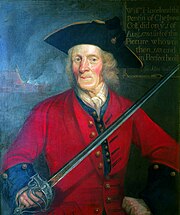
Sergeant William Hiseland, an English Civil War cavalierand one of the first pensioners to be admitted to the Royal Hospital in London
The Royal Hospital was founded by King Charles II in 1682 as a retreat for veterans.[1]The provision of a hostel rather than the payment of pensions was inspired by Les Invalides in Paris.[1]
During the reign of King William III and Queen Mary II, the Royal Hospital was still under construction so they introduced a system for distribution of army pensions in 1689. The pension was to be made available to all former soldiers who had been injured in service, or who had served for more than 20 years.
By the time the Royal Hospital was completed, there were more pensioners than places available in the Royal Hospital. Eligible ex-soldiers who could not be housed in the Hospital were termed Out-Pensioners, receiving their pension from the Royal Hospital but living outside it. In-Pensioners, by contrast, surrender their army pension and live within the Royal Hospital.
In 1703 there were 51 Out-Pensioners. By 1815 this figure had risen to 36,757.
The Royal Hospital remained responsible for distributing army pensions until 1955, following which the phrase “Out-Pensioner” became less common, and “Chelsea Pensioner” was used largely to refer to “In-Pensioners”.
Conditions for admission as an In-Pensioner[edit]
To be eligible for admission as a Chelsea Pensioner a candidate must be a former soldier or non-commissioned officer of the British Army (including National Service) or a former officer of the British Army who served in the ranks for at least 12 years or was awarded a disablement pension while serving in the ranks. They must be over 65 years of age, be able to live independently on the Long Wards on arrival to the Royal Hospital Chelsea and be free of any financial obligation to support a spouse or family.[2]
Life of In-Pensioners[edit]
Applicants for the Royal Hospital Chelsea (RHC) are invited for a four-day stay during which they get a taste of what life is like for a Chelsea Pensioner. If they enjoy their stay and it is felt that they will fit in they are invited to become a Chelsea Pensioner. Upon arrival at the Royal Hospital, each In-Pensioner is measured up for their Blues (day-to-day uniform) and Scarlets (the famous uniform that they wear on parade). They are given their own room, or “berth” in a ward, and are allocated to a Company. Up until refurbishment works carried out in the 1950s, these rooms measured 6 x 6 feet. Work completed in 2015 has ensured that all In-Pensioner berths include en suite facilities, a writing desk, and natural light.
On entry, In-Pensioners surrender their army pension, in return receiving board, lodging, clothing and full medical care.[2]
In-Pensioners also have their own Club with a bar, lounges and restaurant; there are allotments for those who enjoy gardening and facilities for lawn bowls. If an In-Pensioner becomes unwell they are moved into the Infirmary, which is a state of the art care home with nursing and a G.P. medical centre.[2] The Royal Hospital Burial Ground is at Brookwood Cemetery in Surrey.
Admission of women[edit]
Until 2009, only male candidates were admitted. It was announced in 2007 that female ex-service personnel would be admitted on the completion of modernisation of the long wards.[3] In March 2009 the first women in the Hospital’s 317-year history were admitted as In-Pensioners: Dorothy Hughes (aged 85) and Winifred Phillips (aged 82).
Winifred Phillips (1926-2016) trained as a nurse and joined the Auxiliary Territorial Service in 1948 and enlisted in the Women’s Royal Army Corps in 1949 while serving in Egypt. For the next 22 years she served in Singapore, Cyprus and Egypt reaching the rank of Warrant Officer Class 2. She wrote two books about becoming one of the first female Chelsea Pensioners: My Journey to Becoming the First Lady Chelsea Pensioner (2010), and Mum’s Army: Love and Adventure from the NAAFI to Civvy Street(2013). She never married.[4][5]
Dorothy Hughes joined the British Army in 1941, later working as part of 450 Heavy Anti Aircraft Battery in the London Division. In 1945 the Battery was deployed near Dover to defend against V-1 flying bomb attacks. She later worked with the Army Operational Research Group developing fuses in shells used against V-2 rockets and was discharged from the Army in 1946 with the rank of Sergeant.[6][7][8][9][10]
The records at Royal Hospital show that another woman, a Mrs. Christian Davies, was admitted to Chelsea Hospital circa 1717, and was awarded a pension for her service in the army and the wounds she received in the service of the King. She died in 1739 and was buried in the Royal Hospital Chelsea with full military honours.
Clothing[edit]
Chelsea Pensioners are entitled to come and go from the Royal Hospital as they please, and are permitted to wear civilian clothing wherever they travel. However, within the Hospital, and in the surrounding area, they are encouraged to wear a blue uniform. If they travel further from the Royal Hospital, they should wear the distinctive scarlet coats instead of the blue uniform. The scarlet coats are also worn for ceremonial occasions, accompanied by tricornehats. (At other times a peaked hat, known as a shako, is generally worn).
In uniform, the pensioners wear their medal ribbons and the insignia of the rank they reached while serving in the armed forces. They may also wear other insignia they earned during their service and many pensioners now wear parachute jump wings and even SAS jump wings.
Men In Scarlet album[edit]
Seven Chelsea Pensioners at the Royal Hospital Chelsea released an album on 8 November 2010 in order to raise money for the Chelsea Pensioners’ Appeal. Featuring Dame Vera Lynn, Katherine Jenkins, The Soldiers, and Janey Cutler, the album is full of well known wartime songs and includes their traditional march, “The Old Brigade“.[11]
Chelsea Football Club[edit]
Nearby Chelsea Football Club has been affiliated with the Chelsea Pensioners for many years; the club’s first nickname was the Pensioners and until the 1950s the club crest featured a Chelsea pensioner. Residents of the Hospital can be seen attending Chelsea’s home games at Stamford Bridge.[12]
When Chelsea won the Premier League title in 2005, Chelsea Pensioners formed a guard of honour as the players and management came out for the trophy presentation. This was done again when Chelsea won the title in 2010.[13] In tribute to the trademark scarlet coats worn by the pensioners, Chelsea’s kit for the 2010-11 season featured a red trim on the collars.[14]





